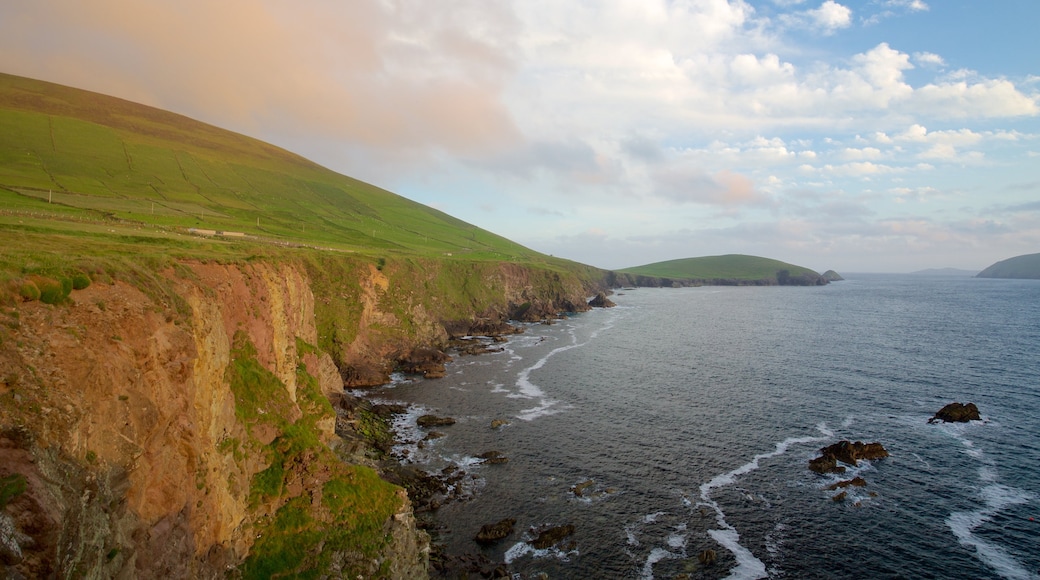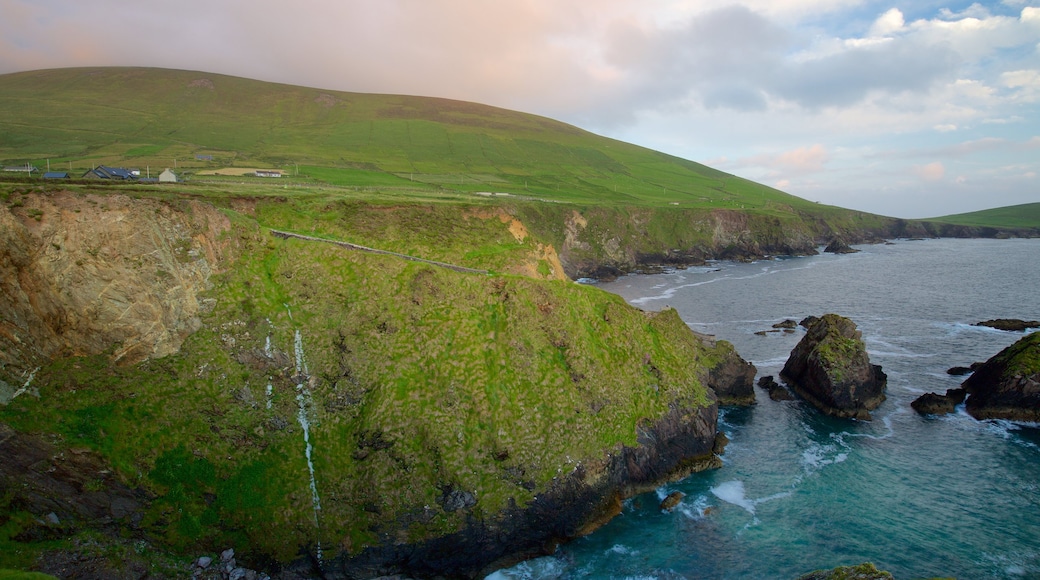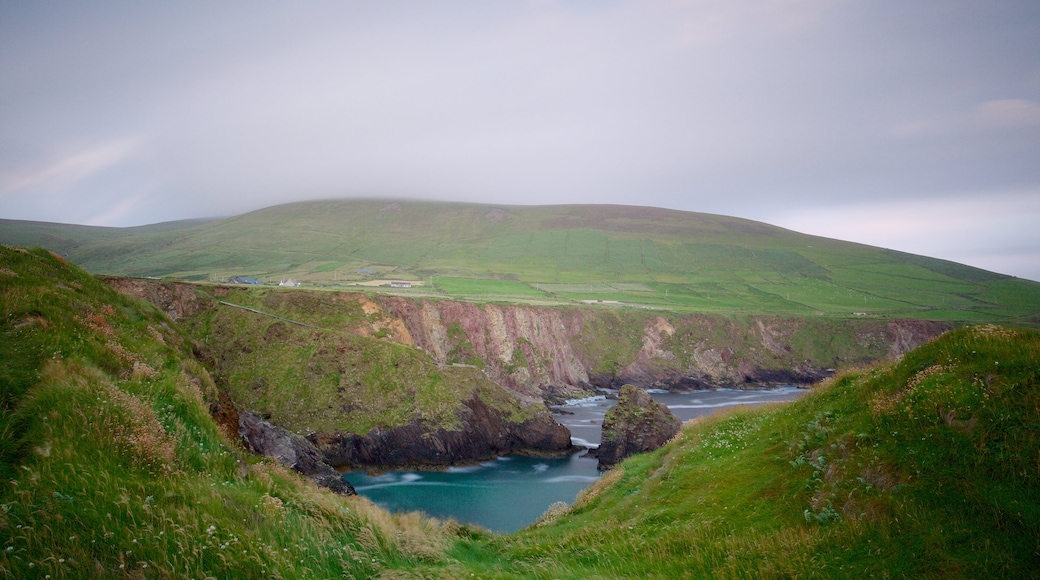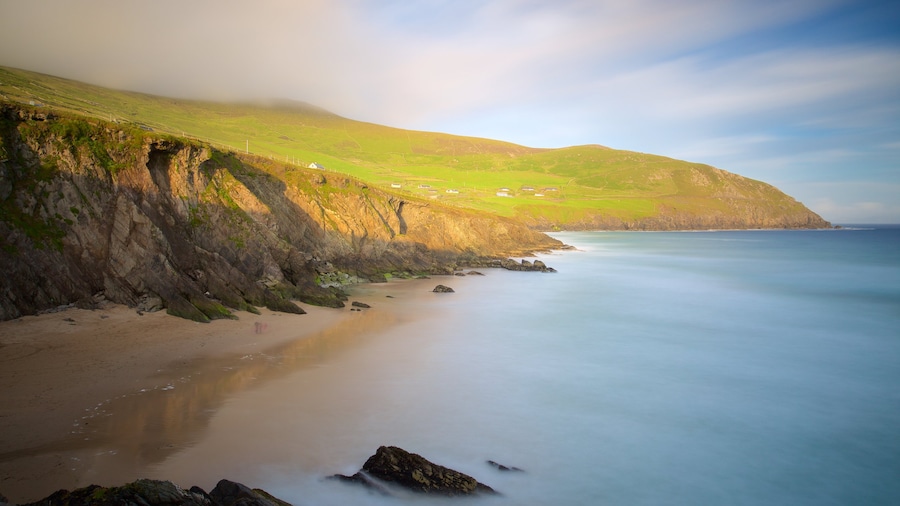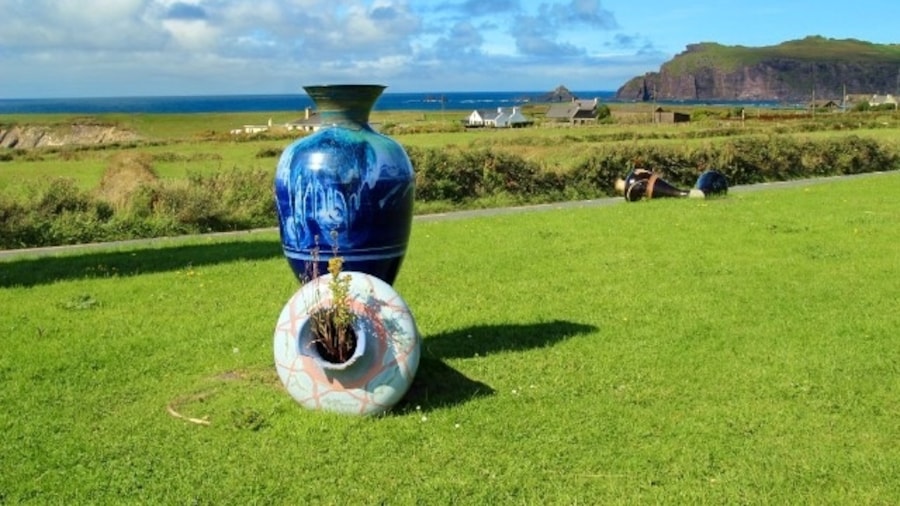Slea Head is a dramatic headland that rises up over the southwestern shores of the Dingle Peninsula and overlooks the Atlantic Ocean. Encompassed by lush emerald landscapes, it’s a wonderful place to explore on foot and experience the beauty of Ireland’s untamed natural beauty. Use Slea Head as an ideal starting point for scenic drives and bike rides along parts of the Wild Atlantic Way.
Natural paths traverse the headland and are popular year-round with hikers of all ages. Let your thoughts ramble as you gaze across undulating meadows, out over the clear blue Atlantic Ocean and down jagged cliffs. Spot myriad birdlife, including choughs, guillemots, harriers and puffins. During the late summer and autumn you might be lucky enough to spot humpback and fin whales.
Major landmarks of the Dingle Peninsula lie within a 30-minute walk of Slea Head via the Dingle Way. Walk west to Coumeenole Beach, a small bay showing the exposed shipwreck MV Ranga, a Spanish ship that ran aground in 1982. Continue to Dunmore Head, which marks one of Europe’s westernmost points. The edge of this headland offers unbeatable views of the remote Blasket Islands.
Walking east from Slea Head you’ll reach the Fahan Beehive Huts. Peek inside the five stone structures that once served as humble family dwellings and are thought to date back to the 12th century. A little farther east is the well-preserved ruin of Dún Beag Fort, built around the 8th or 9th century. Watch audiovisual displays about the history of the fort and region at the Visitor Centre
Slea Head is about a 30-minute drive west from Dingle on Slea Head Drive. This picturesque coastal road is a section of the Wild Atlantic Way, which skirts Ireland’s western coastline. Rent a bike or car and extend your trip to explore other areas of the Dingle Peninsula. Within easy reach of Slea Head are Barryferriter, Dunquin and Ventry Beach.

